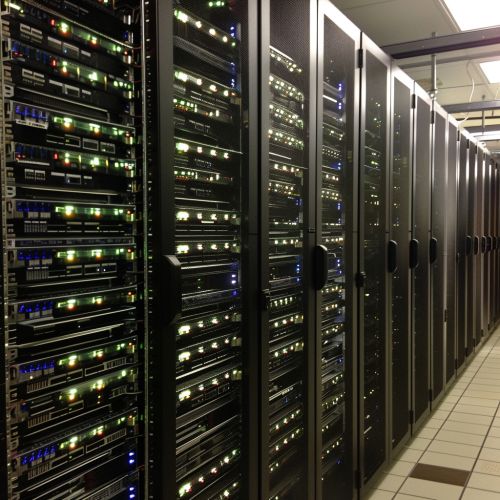Relational Database Management System
Introduction
A Relational Database Management System (RDBMS) is a type of database management system (DBMS) that stores data in a structured format, using rows and columns. This method of storing data is known as the relational model. The system is termed "relational" because the values within each table are related to each other. Tables may also be related to other tables. The relational structure makes it easy to run queries across multiple tables, as the system knows how data in one table is related to data in other tables.
History
The concept of a relational database was first introduced by E.F. Codd, a researcher at IBM's San Jose Research Laboratory, in 1970. Codd's paper, "A Relational Model of Data for Large Shared Data Banks," described a new system for storing and retrieving data, which he called a "relational database." This system was different from the hierarchical and network models used at the time. The relational model proposed by Codd was based on mathematical set theory and used a collection of tables to represent both data and the relationships among those data.
Architecture
The architecture of a relational database management system is complex and comprises several components, each performing a crucial role. These components include:


Database Kernel
The database kernel is the core of the RDBMS and is responsible for many critical functions such as concurrency control, memory management, data storage, and recovery management. The kernel ensures that the database is robust and can handle multiple transactions simultaneously.
SQL Engine
The Structured Query Language (SQL) engine is responsible for interpreting and executing the SQL commands that are sent to the RDBMS. The SQL engine uses the data dictionary to understand the structure of the database and to validate the SQL commands.
Data Dictionary
The data dictionary is a set of tables and views used to manage the database's metadata. It stores information about the database's objects, including tables, indexes, constraints, and views.
Query Optimizer
The query optimizer is a component of the RDBMS that determines the most efficient way to execute a SQL query. It considers factors such as the size of the tables, the indexes available, and the complexity of the query.
Transaction Manager
The transaction manager is responsible for managing all the transactions that occur within the RDBMS. It ensures that all transactions are completed successfully and that the database remains in a consistent state.
Key Concepts
Relational database management systems are based on several key concepts that define their structure and operation.
Tables
In a RDBMS, data is organized into tables (also known as relations). Each table represents a specific entity type and holds the data for that entity. For example, a table for employees might include columns for employee ID, first name, last name, and department.
Rows
Each row in a table represents a unique instance of the entity type that the table represents. For example, in an employees table, each row would represent a single employee.
Columns
Each column in a table represents a specific attribute of the entity type that the table represents. For example, in an employees table, the columns might represent attributes such as employee ID, first name, last name, and department.
Keys
A key is a column or set of columns used to identify a row uniquely in a table. There are several types of keys in a relational database, including primary keys, foreign keys, and candidate keys.
Normalization
Normalization is a process used to eliminate redundancy and dependency in the data. The goal of normalization is to ensure that each piece of data is stored in only one place, reducing the chances of data becoming out of sync.
Indexes
An index is a data structure that improves the speed of data retrieval operations on a database table. Indexes are used to quickly locate data without having to search every row in a database table every time a database table is accessed.
Views
A view is a virtual table based on the result-set of an SQL statement. A view contains rows and columns, just like a real table. The fields in a view are fields from one or more real tables in the database.
Transactions
A transaction is a single unit of work. If a transaction is successful, all data modifications made during the transaction are committed and become a permanent part of the database. If a transaction encounters errors and must be cancelled or rolled back, then all data modifications are erased.
Advantages and Disadvantages
Like any technology, relational database management systems have their advantages and disadvantages.
Advantages
- Data Independence: The system allows for data independence as it is not dependent on any one application or program. - Efficiency: RDBMSs are efficient as they can manage a large amount of data and multiple users simultaneously. - Flexibility: The system is flexible as it allows users to create, read, update, and delete data in a database. - Security: RDBMSs provide robust security features, including access control, data encryption, and auditing.
Disadvantages
- Complexity: RDBMSs are complex systems that require a high level of skill to design and manage. - Cost: The cost of purchasing and maintaining a RDBMS can be high, especially for large organizations. - Performance: While RDBMSs are efficient, they may not perform well for certain tasks, such as handling large amounts of unstructured data.
Conclusion
Relational database management systems are a critical part of the IT infrastructure for many organizations. They provide a robust and efficient method for storing, retrieving, and managing data. Despite their complexity and cost, the benefits they offer make them an attractive choice for many businesses.
See Also
- Database Normalization - SQL - Database Indexing - Database Transaction
